Pizza chains have become a staple around the world, offering quick and delicious meals that fit almost any craving. Some of them have grown to incredible sizes, expanding across countries and continents with their unique flavors, business models, and loyal followings. From well-known classics like Pizza Hut and Domino’s to rising names like MOD Pizza, each one brings its own twist to the table. Here’s a look at the largest pizza chains worldwide, ranked by their impressive gross sales and distinctive approaches to satisfying pizza lovers everywhere.
Hungry Howie’s
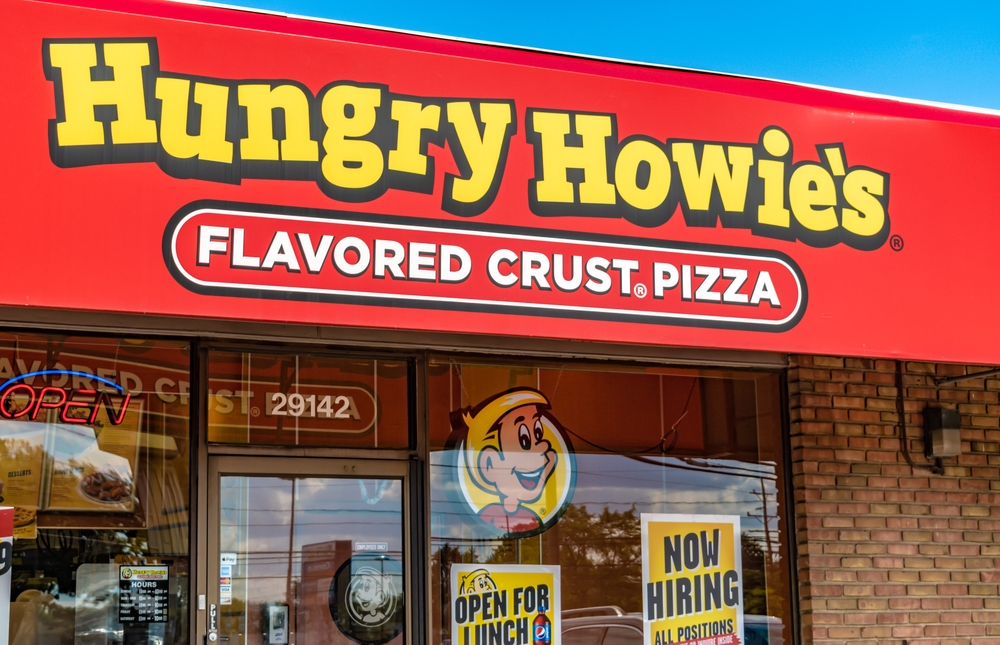
Hungry Howie’s was founded in 1973 by Jim Hearn in Taylor, Michigan, and is famous for its flavored crusts, which include options like garlic, Cajun, and butter cheese. It has grown to over 500 locations across 21 states in the U.S., maintaining a strong regional presence. Headquartered in Madison Heights, Michigan, it focuses on using fresh ingredients and offering affordable prices. It prides itself on being a family-friendly brand with a laid-back atmosphere, attracting customers with its unique flavor combinations and commitment to quality. Its menu includes various pizzas, subs, salads, and wings, catering to a broad customer base. Its flavored crusts are a defining feature, setting them apart from competitors in the pizza market. Its gross sales are around $400 million, with steady growth driven by its unique offerings and loyal customer base. It also focuses on community involvement, frequently partnering with local organizations for fundraising and events.
Sbarro
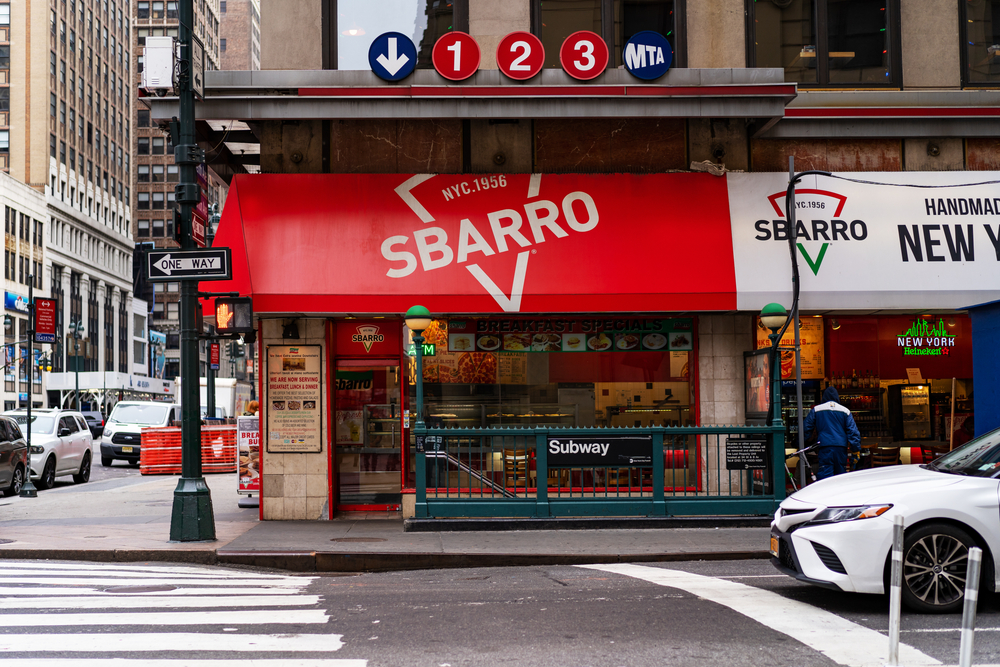
Sbarro, founded in 1956 by Gennaro and Carmela Sbarro, started as a small Italian grocery store in Brooklyn, New York. Known for its New York-style pizza and fast-casual dining model, it has grown to over 600 locations worldwide. It is commonly found in shopping malls, airports, and travel centers, making it a popular choice for quick pizza on the go. Headquartered in Columbus, Ohio, it offers a variety of Italian-American dishes, including pasta, stromboli, and desserts. Its iconic triangle pizza slice has become a staple for mall-goers and travelers alike. Its menu focuses on traditional Italian flavors, with its pizzas known for their generous toppings and foldable crusts. Despite facing financial struggles in recent years, it has worked on restructuring its brand and improving its offerings to stay competitive. Its gross sales are estimated at around $500 million, as the brand maintains a niche presence in high-foot-traffic locations. The chain has recently focused on expanding its international presence, especially in regions like Latin America and Asia.
MOD Pizza
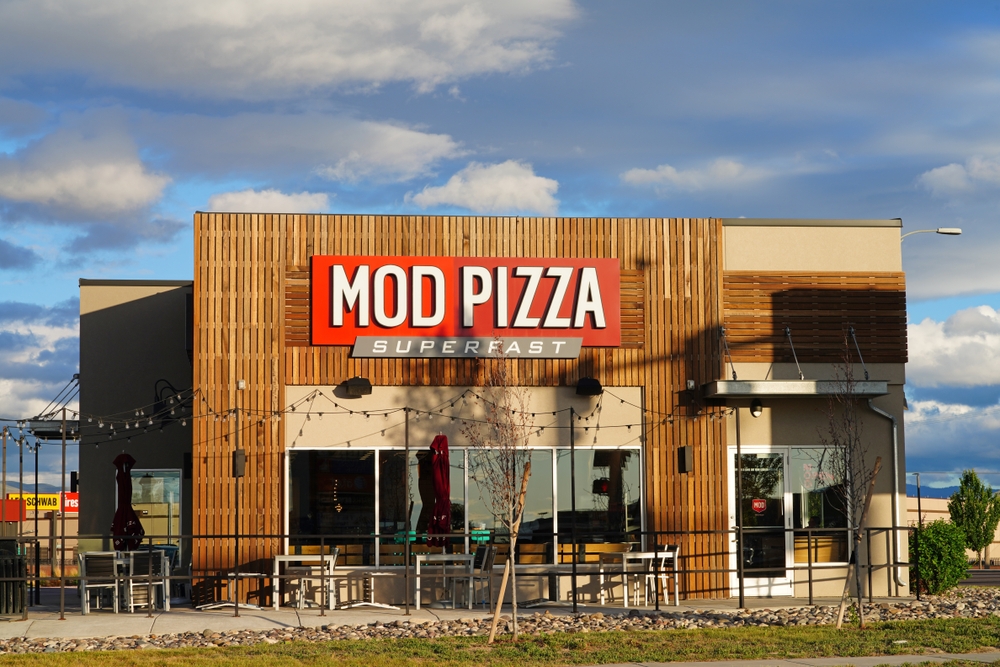
MOD Pizza was founded in 2008 in Seattle, Washington, by husband-and-wife team Scott and Ally Svenson, who aimed to create a fast-casual, build-your-own pizza experience. MOD stands for “Made On Demand,” and the chain allows customers to customize their pizzas with unlimited toppings at a flat price. Headquartered in Bellevue, Washington, It has rapidly expanded, with over 500 locations across the U.S. and the U.K. The company prides itself on being a people-first organization, prioritizing employee well-being and community engagement. It offers an array of pizza and salad options, including vegan and gluten-free choices, to cater to diverse dietary preferences. It has gained popularity for its fast, affordable, and customizable pizzas, making it a top choice among younger consumers. Its social mission, including hiring practices that focus on employing individuals with barriers to employment, has resonated with customers. With gross sales nearing $600 million, it continues to expand as a leader in the fast-casual pizza segment. Its emphasis on inclusivity and community engagement makes it unique in the highly competitive pizza industry.
Papa Murphy’s
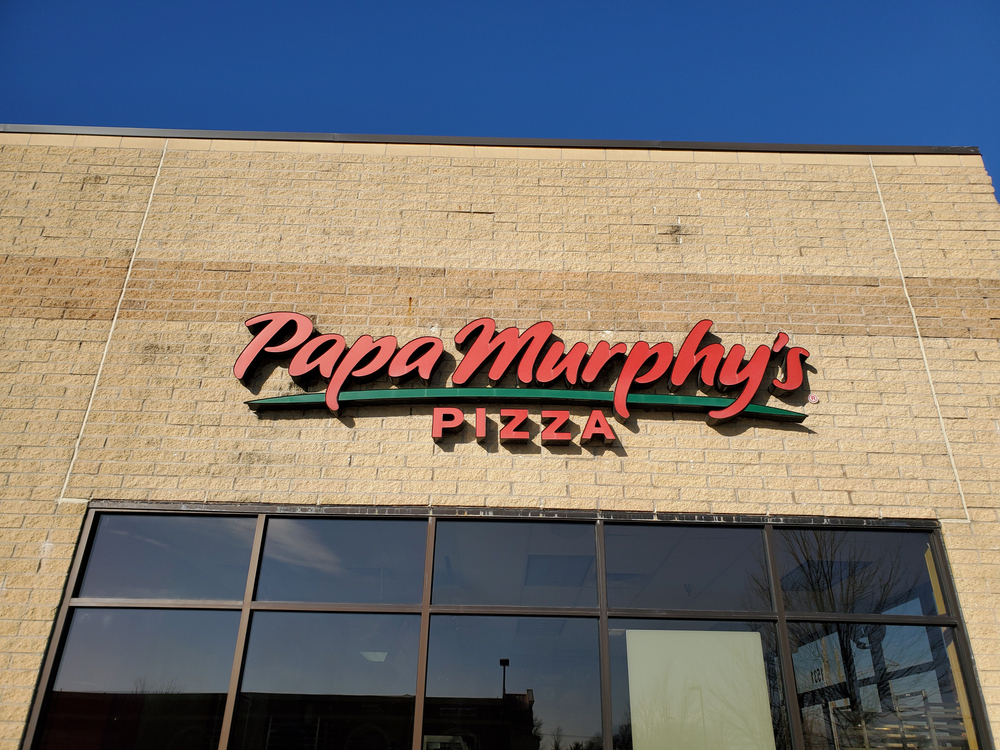
Founded in 1995 in Vancouver, Washington, Papa Murphy’s is unique among pizza chains as it operates under a “take-and-bake” model. Customers pick up uncooked pizzas and bake them at home, which sets it apart from traditional pizza chains. This approach allows it to keep operational costs lower while offering fresh ingredients and customizable options. It quickly gained popularity for its focus on quality ingredients and made-to-order freshness, expanding to over 1,300 locations across the United States and Canada. It is headquartered in Vancouver, Washington, and continues to appeal to families and customers looking for a more hands-on pizza experience. Its offers various options, including gluten-free crusts and “Delite” low-calorie pizzas, to cater to health-conscious consumers. Its loyal customer base appreciates its flexible options and ability to customize at home. Its gross sales are approximately $800 million, driven largely by its unique take-and-bake concept. The chain has also recently enhanced its digital ordering system to improve convenience for its customers.
California Pizza Kitchen
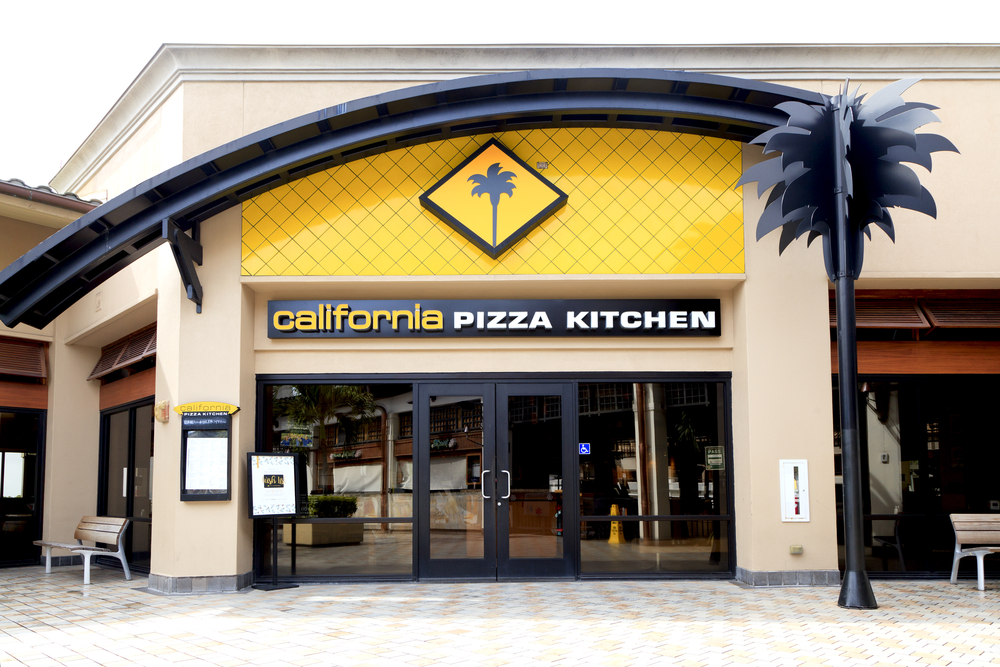
California Pizza Kitchen (CPK) was founded in 1985 in Beverly Hills, California, by lawyers Rick Rosenfield and Larry Flax. Known for introducing innovative pizzas, such as the original BBQ Chicken Pizza, it focuses on creative flavors and premium ingredients. It has grown into a major chain with over 250 locations worldwide, including international outlets in countries like Japan, Hong Kong, and Mexico. Headquartered in Los Angeles, California, it offers a diverse menu that includes pastas, salads, and specialty pizzas inspired by global cuisines. It is recognized for its relaxed, casual dining experience, often located in upscale shopping centers and urban areas. It was an early adopter of open kitchens, which allows customers to watch their food being prepared. Over the years, it has gained a strong reputation for providing a unique, California-inspired dining experience. With gross sales around $1 billion, it is a leader in the fast-casual pizza sector. It continues to innovate, introducing plant-based and gluten-free options to cater to changing dietary preferences.
Marco’s Pizza
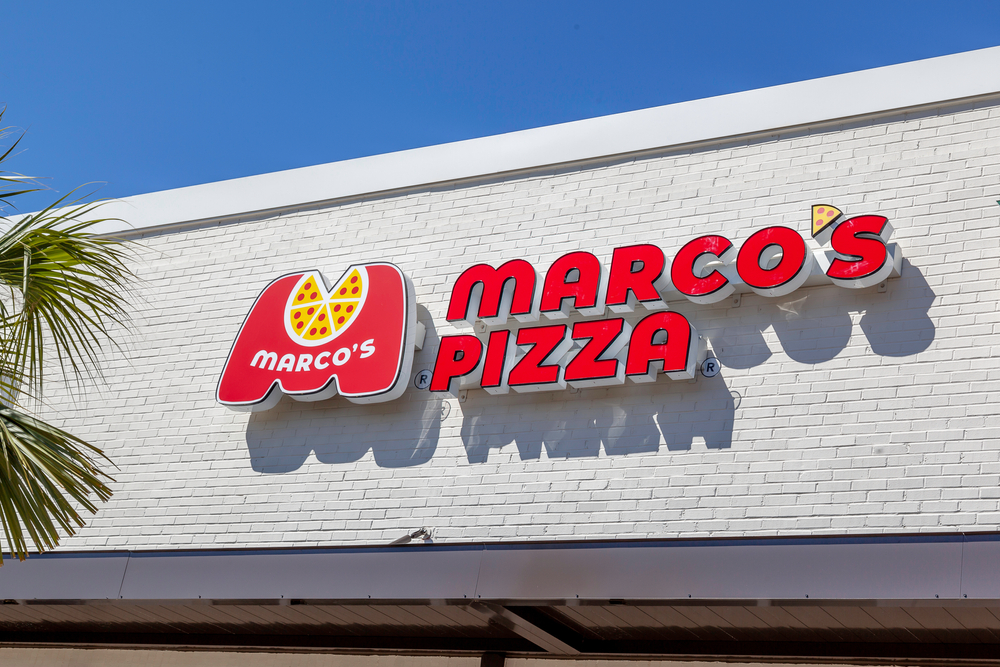
Marco’s Pizza was founded in 1978 by Italian immigrant Pasquale “Pat” Giammarco in Toledo, Ohio. It focuses on authentic Italian flavors, offering a variety of pizzas, subs, and salads with fresh ingredients. It has since grown to over 1,000 locations, primarily in the United States, but has recently expanded into countries like Puerto Rico and the Bahamas. Headquartered in Toledo, it prides itself on quality, using a unique three-cheese blend and fresh dough made daily in stores. It also offers a customizable pizza experience, allowing customers to personalize their pizzas with various toppings and crust styles. Its emphasis on traditional Italian recipes sets it apart from other large pizza franchises. It has earned a loyal customer base by focusing on quality and flavor over aggressive expansion. Gross sales are estimated at approximately $1.2 billion, placing it among the top pizza chains in the United States. It is actively expanding, aiming to reach new markets and grow its loyal following.
Papa John’s
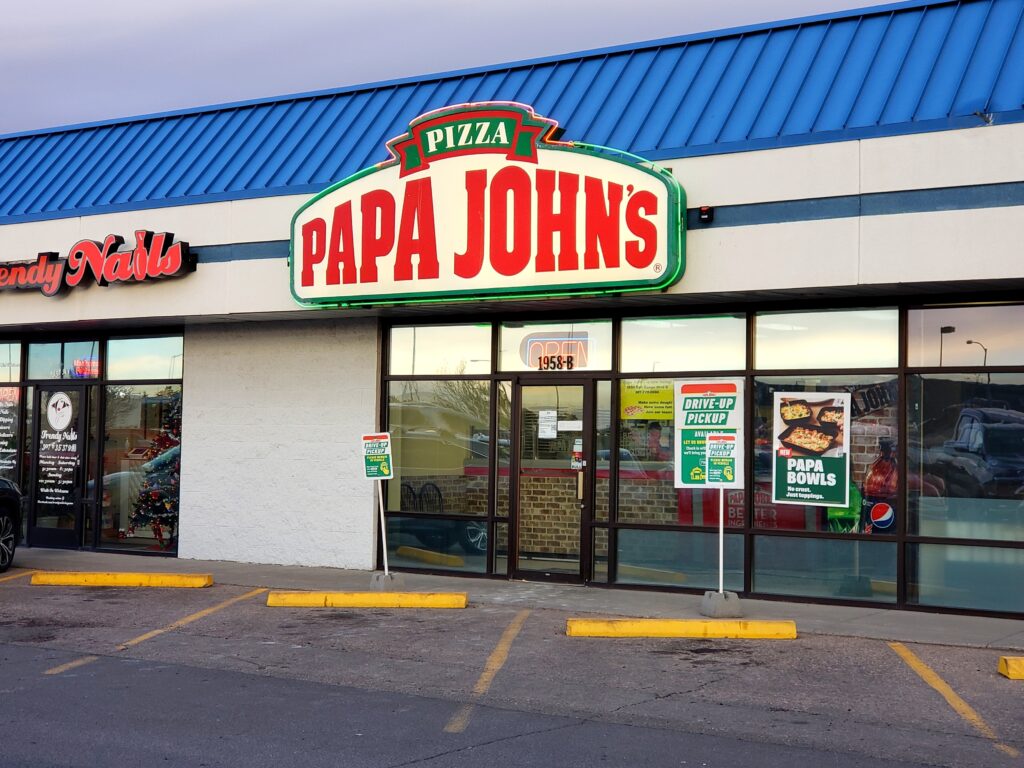
Papa John’s was founded in 1984 by “Papa” John Schnatter in Jeffersonville, Indiana, with a focus on delivering quality ingredients and superior taste. It has since grown into a global pizza chain with over 5,000 locations worldwide and is headquartered in Louisville, Kentucky. Known for its “Better Ingredients, Better Pizza” motto, Papa John’s has carved a niche in the market by emphasizing quality ingredients and unique menu items like garlic sauce with every pizza. Papa John’s also introduced the “Pizza of the Month” program, showcasing unique flavors and catering to changing customer preferences. The chain has developed a strong digital presence, simplifying ordering through mobile apps and online platforms to cater to its growing customer base. With ongoing efforts to expand internationally, Papa John’s has made strides in markets outside North America, especially in Europe and Asia. The brand continues to appeal to health-conscious consumers with a selection of low-calorie and gluten-free options.
Papa John’s gross sales have hovered around $4 billion, reflecting its strong presence in both domestic and international markets. The company remains committed to quality, leveraging its unique branding and loyal customer base.
Little Caesars
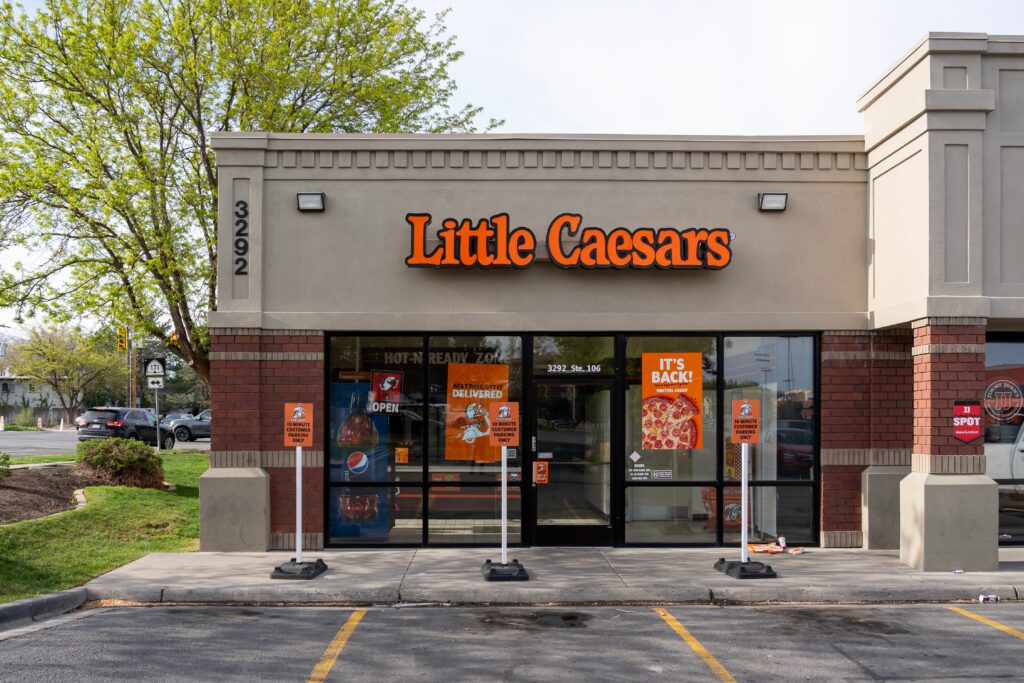
Founded in 1959 by Mike and Marian Ilitch in Detroit, Michigan, Little Caesars is well-known for its affordable pizzas and the memorable “Pizza! Pizza!” tagline. Initially a single restaurant, Little Caesars has expanded to become a globally recognized chain with over 5,500 locations in over 27 countries. Headquartered in Detroit, Little Caesars built its success on value-driven offers, like the Hot-N-Ready pizza, which allows customers to pick up fresh, ready-made pizzas without waiting. This unique concept boosted Little Caesars’ growth by prioritizing speed and value for its customers. Little Caesars has also expanded its menu to include Crazy Bread and wings, broadening its appeal. The chain’s low-cost structure and efficient operations have made it a favorite among budget-conscious customers, especially families and young adults.
Little Caesars’ gross sales have reached approximately $5 billion, driven by its strong market positioning as a budget-friendly pizza option. Its focus on affordability and convenience has made it a popular choice in the United States and abroad.
Pizza Hut
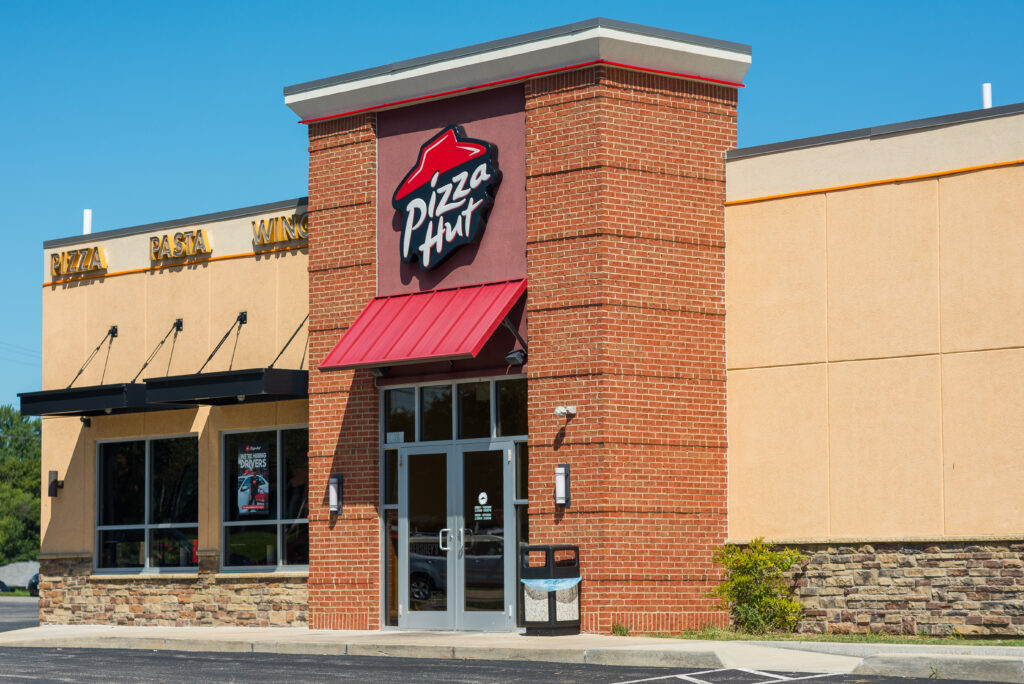
Pizza Hut, one of the largest and most recognizable pizza chains globally, was established in 1958 in Wichita, Kansas. The chain was founded by brothers Dan and Frank Carney, who opened the first location with a modest $600 loan from their mother. Known for its signature red roof design, Pizza Hut has since expanded its presence to over 18,000 restaurants worldwide, spanning more than 100 countries. It offers a range of products, including its famous pan pizza, stuffed crust, and pasta dishes, catering to a broad customer base. Headquartered in Plano, Texas, Pizza Hut operates under the umbrella of Yum! Brands, which also includes Taco Bell and KFC. Its emphasis on innovative menu items and customer-centric promotions has contributed to its enduring popularity. Pizza Hut’s international expansion strategy has been focused on adapting its menu to local tastes, enhancing its appeal globally. Recently, Pizza Hut has also introduced environmentally-friendly packaging to align with sustainable business practices.
With gross sales reaching approximately $12 billion in recent years, Pizza Hut continues to grow and modernize its offerings to compete in a dynamic market. In addition to its dine-in, takeout, and delivery options, Pizza Hut has invested heavily in digital ordering systems to enhance customer convenience.
Domino’s Pizza
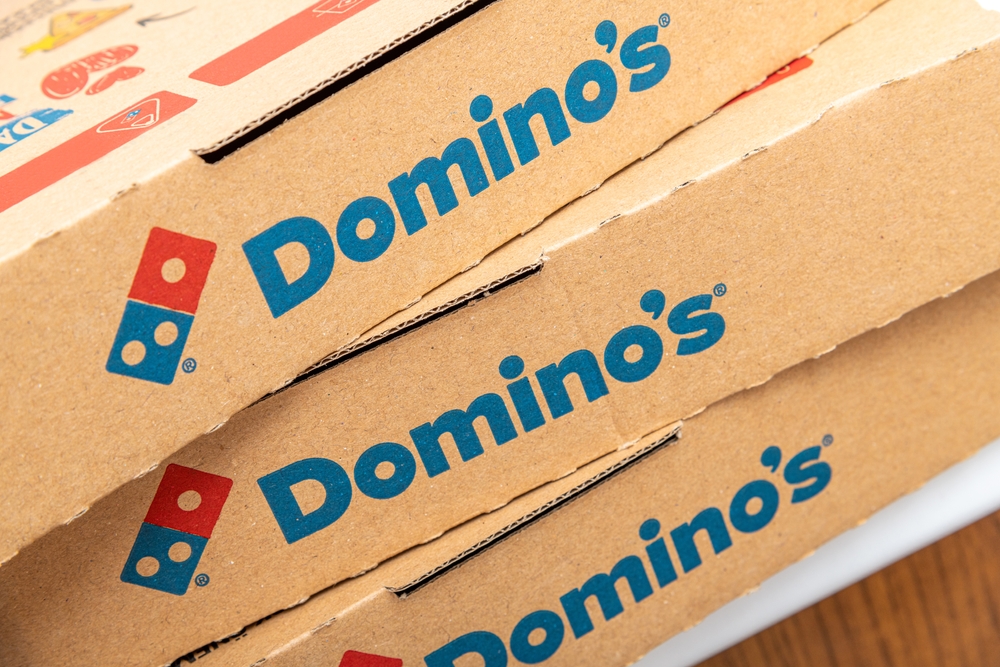
Domino’s Pizza, originally founded as “DomiNick’s” in 1960 by brothers Tom and James Monaghan in Ypsilanti, Michigan, quickly evolved into a global pizza powerhouse. In 1965, after buying out his brother’s share, Tom Monaghan rebranded it as Domino’s and began to expand. Today, Domino’s operates over 17,000 stores in over 90 countries, with its headquarters in Ann Arbor, Michigan. Known for its “30 minutes or less” delivery guarantee, Domino’s revolutionized pizza delivery with innovative technology and efficiency. Domino’s menu has expanded significantly over the years, now including pasta, chicken, and desserts, though pizza remains at its core. The chain has heavily invested in digital platforms, allowing customers to order via app, website, and even social media, making it a leader in tech-savvy convenience. Domino’s now stands out for its strong digital ordering infrastructure, which has led to consistent sales growth.
Domino’s gross sales have reached around $17.8 billion, making it one of the top players in the pizza industry. Its focus on quick delivery and high-tech ordering platforms has secured its position in both national and international markets.
This article originally appeared on Rarest.org.
More from Rarest.org
20 Keystone Species That Play a Crucial Role in Their Habitats

Keystone species are essential to maintaining the balance of their ecosystems. Without them, the structure of the habitat could change dramatically. These species often influence many other organisms in their environment, helping to regulate populations and maintain biodiversity. Read More.
15 Towering Sand Dunes Creating Otherworldly Landscapes

Towering sand dunes are some of the most mesmerizing natural wonders on Earth, creating landscapes that seem almost otherworldly. These colossal formations, sculpted by wind and time, rise dramatically from the ground, offering breathtaking views and a sense of awe to those who witness them. Read More.
15 Endangered Species Residing in Hidden Corners of the Earth

In the far reaches of our planet, there are species so rare and elusive that they seem almost mythical. These creatures, often residing in the most remote and hidden corners of the Earth, are also some of the most endangered. Read More.
